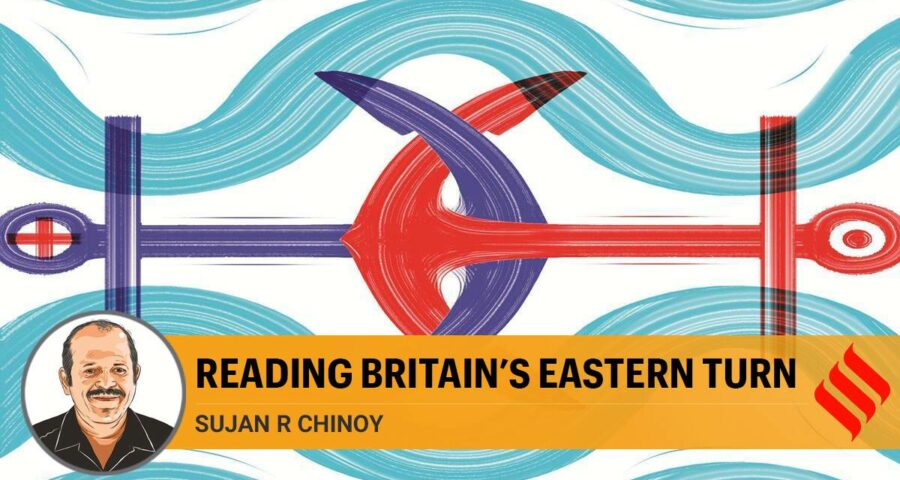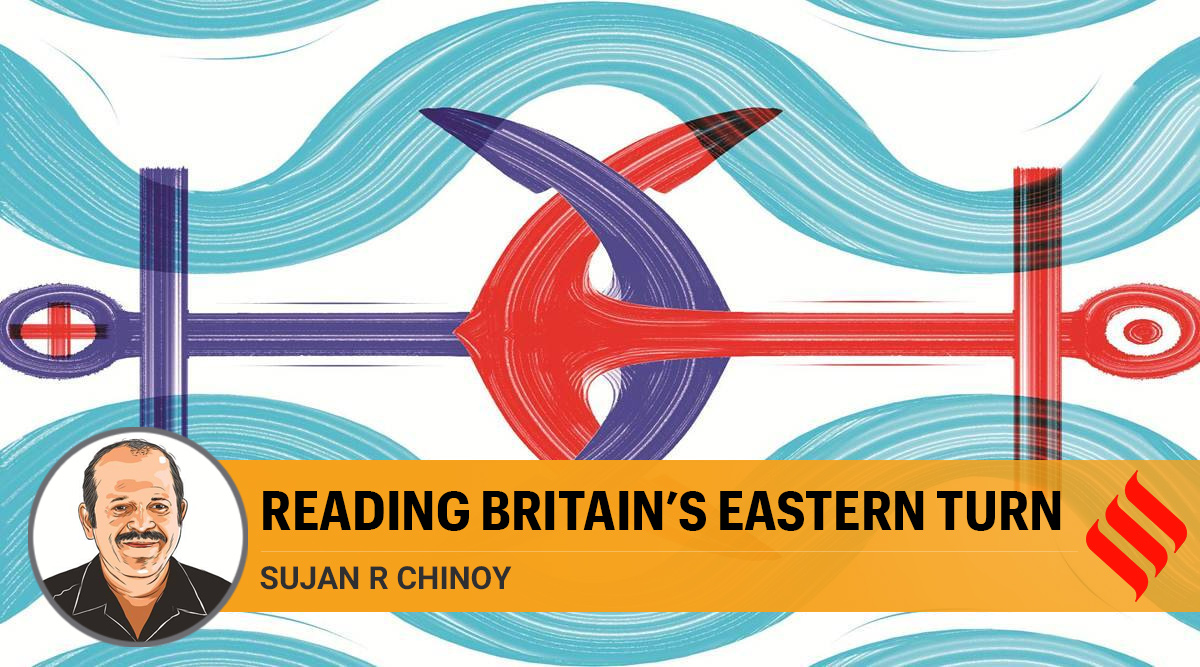The two nations share a long history of cooperation. After its estrangement from Europe, a post-Brexit UK is seeking to anchor itself alongside an old friend.
Global attention has been riveted on the new Biden administration, especially for portents of US policy on issues such as relations with China, the Indo-Pacific and the Quadrilateral security dialogue, clouding out some crucial developments in defence cooperation between the UK and Japan. On February 3, the two countries held the fourth Japan-UK foreign and defence ministerial meeting after an interregnum caused by the UK’s preoccupation with Brexit and its aftermath. The 2+2 dialogue, which commenced in 2015 at a time when Japan was to assume the rotational command of CTF 151 for anti-piracy operations in the Gulf of Aden, also identified an Acquisition and Cross-Servicing Agreement (ACSA) as an important pillar in the framework of security cooperation between the two countries.
As Foreign Secretary Dominic Raab said on the occasion of the latest round, Japan is “a key security partner for the UK and an enduring friend”. The UK, which is assuming the Presidency of the G7 this year as well as hosting the UN Climate Conference, has carried out a major outreach towards Japan in particular. Japan has emerged as a key fulcrum of the UK’s evolving Indo-Pacific strategy, and the two sides have recently concluded a Maritime Security Arrangement between the Royal Navy and the Japan Maritime Self-Defence Forces (JMSDF) to promote Maritime Domain Awareness (MDA). This comes in the wake of the British Army becoming the only country after the US to train with Japanese forces on Japanese soil.
There is no doubt that the two sides have moved rather quickly to deepen maritime cooperation. As recently as in the second round held in 2016, there was no mention of the Indo-Pacific in the joint statement. Japan had merely expressed the hope that “the UK would play a more proactive and constructive role for the Asia-Pacific security environment, and contribute to the region’s peace and stability”. By the time the third round was held at the end of 2017, the joint statement evolved to refer to Japan’s initiatives based on the “Free and Open Indo-Pacific Strategy” and to welcome greater engagement by the UK in the Indo-Pacific region.
This partnership has been further cemented in the recently-held fourth round in which the two pairs of ministers referred to the “realisation of a Free and Open Indo-Pacific” and spoke of their commitment to “upholding the rules-based international order”. In a thinly-veiled reference to shared concerns about China, they also mentioned “their opposition to attempts to coerce others in the region including by economic means”.
Post-Brexit, the UK is looking to strengthen its moorings, once again, in the Indo-Pacific region. It is, proverbially speaking, “the return of the prodigal son” to a region of great familiarity after years of uneasy cohabitation with continental Europe, a region now clearly in disarray.
One of the most important outcomes of the fourth round of the 2+2 dialogue is the planned visit by HMS Queen Elizabeth, Britain’s largest warship, along with her Carrier Strike Group to East Asia in a bid to elevate defence cooperation and to contribute to a free and open Indo-Pacific. This is bound to rile Beijing, which has historically criticised the UK for its “gun-boat diplomacy” during the Opium Wars of the 19th century when Britain ruled the high waves from the Suez Canal all the way to Shanghai. The UK is also underscoring the fact that it may well be a diminished power in comparison to the zenith of its colonial glory, but is certainly not an extinguished power and definitely not a pushover. For the UK to dispatch its finest warship to East Asia speaks volumes about a country that is eager to renew its old partnerships across the Indo-Pacific in order to balance the effects of its recent estrangement from Europe.
Japan-UK ties have experienced a roller-coaster ride for over a century. After Commodore Matthew C Perry forced Japan to sign a commercial treaty with the US in 1854, Japan was quick to forge a maritime partnership with Britain under which most of its principal warships were built in British yards. France, too, chipped in with its formidable technological prowess to support Japan but Britain was still the preferred partner. Japan’s defeat of China in 1894-95 made it the preeminent power in Asia and a sought-after ally for Britain against the backdrop of growing fiction with China. No doubt Japan’s acquisition of the latest naval platforms and technologies of the era and its adoption of British operational training modules played an important role in its naval victory over Russia in the Battle of Tsushima in 1905, the first instance of an Asian power vanquishing a European nation. The Anglo-Japanese Alliance (1902-23) lasted through the First World War when the Imperial Japanese Navy hunted German warships in aid of Britain in the Pacific and the Indian Oceans. However, the period leading up to the Second World War resulted in the two countries drifting apart and ending up as adversaries in battles that raged through Southeast Asia up to Kohima in India.
It is hardly surprising that the UK and Japan should be coming together again, given their long history of naval cooperation in the Indo-Pacific. The UK’s invitation to Japan to join the “Five Eyes” intelligence alliance could further strengthen the latter’s tandem with the USA, UK, Australia, New Zealand and Canada in the grouping.
An interesting aside to the Anglo-Japanese alliance of the past is the story of the origins of the Japanese curry. Today, the only “curry festival” in the world takes place in Yokosuka, a naval port in Japan that featured in the saga of cooperation between the two countries. It is said that sailors of the Imperial Japanese Navy suffered from beriberi, caused by nutritional deficiency. The solution apparently suggested by the British Navy was that they should consume vitamin-rich wheat flour. However, their staple diet being rice, the Japanese sailors did not readily take to such alien food. Whereupon, the British Navy shared the recipe of the ubiquitous Indian curry, so readily available with their onboard chefs. The difference was that the sauce was deliberately made of a blend of curry powder and wheat flour. When combined with rice, the “Japanese curry” with its succulent ingredients of meat, poultry and vegetables, was accepted by naval ratings and became an instant hit. It has remained at the top of popular menu charts across Japan ever since. The day is not far when an expanded Quad will include the UK, and curry will emerge as the common denominator during maritime exercises, especially since it is already so popular in Australia. Perhaps, the US will also readily swap the hamburger for the curry, realising just how popular it is in the Indo-Pacific.
This article first appeared in the print edition on March 10, 2021 under the title ‘Reading Britain’s eastern turn’. The writer, a former ambassador, is currently the director general of the Manohar Parrikar Institute for Defence Studies and Analyses, New Delhi; views expressed are personal
Source: Read Full Article


